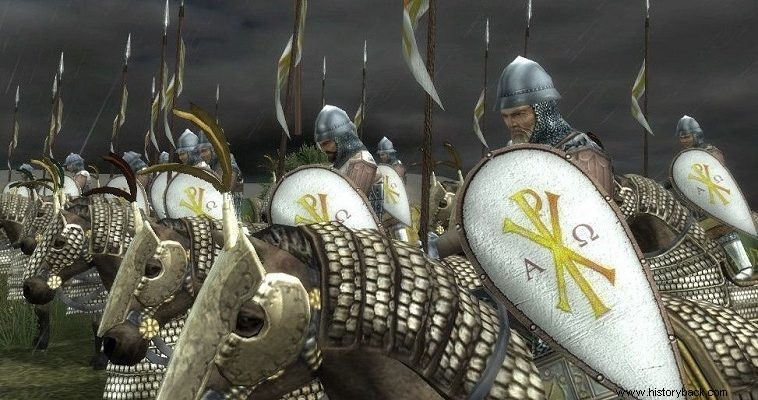
From the middle of the 11th century AD. the Hungarians raided the Byzantine lands trying to reach the shores of the Adriatic. Later, the Hungarians allied themselves with various Serbian governors, causing serious concern to the Byzantines who saw their dominance in the Western Balkans threatened.
The Byzantines responded by fomenting internal disturbances in the Hungarian kingdom while at the same time raiding enemy territory. This situation continued for some time. Emperor Manuel I Komnenos, however, wanted to make peace with the Hungarians by securing his northwestern borders.
The Hungarian king Stephen III seemed at first willing to agree. He even sent his brother Prince Bela to Constantinople to negotiate. The two sides came to an agreement but Stefanos refused to honor the agreement reached by his brother. Thus the war broke out again. The emperor, angry with the treachery of Stephen, wanted to personally campaign against him. But he could not due to illness.
Campaign – opposing forces
Thus, in the summer of 1167 AD assigned to the commander-in-chief Grand Duke Andronikos Contostefanos to lead a small army against the Hungarians. The Byzantine army crossed the river Savo leaving behind the city of Sirmio (today's Smerka Mitrovica in Vojvodina) in what was then Lower Pannonia .
According to the reliable Byzantine historian Ioannis Kinnamos, the Byzantine army numbered about 15,000 men of which 1/3 were mercenary Cumans and other Turkic light horse archers, as well as a few western knights.
The army was deployed in three corps. The first consisted of the mercenaries with the knights as the vanguard and the horse archers as support. The center, which was commanded by Contostefanos himself, consisted of elite troops, the Guard of the Varangians and the elite body of the guards of the Companies, some Lombard mercenaries and about 500 Serbian allies. He also had the most elite body of the imperial guard, the Okei, or Companions of the emperor.
On the left were four ranks of Byzantine troops commanded by Dimitrios Vranas, George Vranas, Tatikios and Basilius. An elite Byzantine division with a few German mercenaries and some Cumans lined up on the right. The right wing was commanded by Ioannis Contostefanos and Andronikos Lampardas. On the extreme right and extreme left were selected divisions of light cavalry (procursators). Three formations of crossbowmen (satellite infantry) and archers were available as a reserve.
On the other side, the Hungarian Denis (the Byzantines call him Dionysius) count of Bats had a similar number of men. In addition to the Hungarian divisions, it had German allies. Unlike the Byzantines who had a vanguard and a reserve, the Hungarian commander ordered his forces in a single line of battle in three almost equal divisions.
According to other sources, however, the Hungarians lined up with the cavalry in front and the infantry behind. However, this does not seem likely as it would expose them to flanking attacks by the Byzantines. The historian Nikitas Choniatis mentions that the Hungarians had heavy and light cavalry and mainly light infantry. But he describes the Hungarian front line cavalry as heavily armored riding armored horses.
Catalytic battle
Contostephanos, seeing the Hungarian faction, decided to force the opponents to attack him. For this purpose he sent forward his horse archers who began to wear down their opponents with constant archery.
The Hungarians reacted as the Byzantine general suspected and attacked en masse, with all their forces. The Hungarians pressed the Byzantines. On the Byzantine left, the units of the Vranades retreated, deliberately towards the river Savos. There they stopped and reformed their lines.
The Byzantine center and the right flank easily faced the Hungarian onslaught. Lampardas even carried out an impetuous counterattack with his horsemen. The opponents engaged in deadly hand-to-hand combat with the Byzantines' headbreakers smashing against their more heavily armored opponents.
Kontostefanos also counterattacked in the center by throwing his reserves into the battle. It seems that the left wing of the Byzantines also counterattacked. All together, the Byzantines first pushed back the Hungarians and then broke through the enemy lines.
The Hungarians, terrified, put it to their feet, pursued by the Byzantines, who mercilessly crushed them. The Hungarian commander managed to be rescued by one of his soldiers. But his banner and his horse were taken over.
Five other Hungarian generals were captured along with many soldiers. But the dead were many more. The Byzantines also captured over 2,000 pieces of armor and countless weapons and shields from the enemies. The overwhelming defeat forced the Hungarian king to immediately ask for peace , recognizing the borders of the empire. He also agreed to pay a servitude tax and hand over his relatives as hostages.
